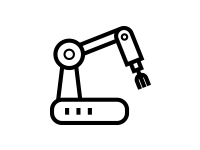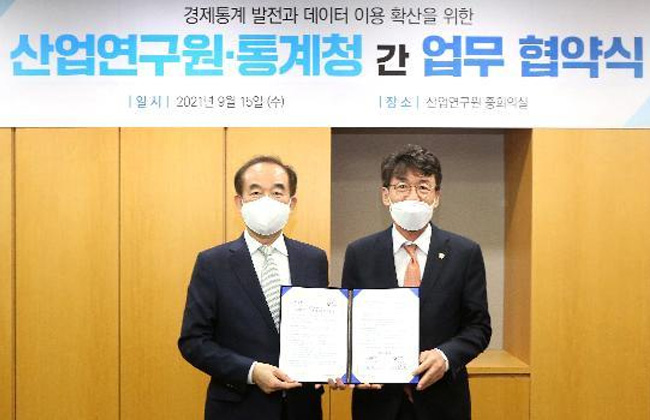Industry Trends
In July 2023, Korea's industrial activity remained on track of a gradual recovery, with the decline in industrial production stemming from temporary factors.
| Subject | All industries | Mining & manufacturing |
Service | Retail sales | Equipment investment |
Construction completed |
|---|---|---|---|---|---|---|
| Monthly Change (%) | ▲0.7 | ▲2.0 | ∆0.4 | ▲3.2 | ▲8.9 | ∆0.8 |
Production of mining and manufacturing industries fell by 2% in July as semiconductor production cuts affected production to bring down semiconductor production by 2.3%, and machinery and equipment production by 7.1%. In the service sector, food and lodging fell by 0.9% and leisure by 2.3% due to bad weather, but telecommunications and finance and insurance both saw an increase of 1.5%, enabling the sector to grow by 0.4%. Retail sales fell by 3.2%, with durable goods, semi-durable goods, and nondurable goods declining by 5.1%, 3.6%, and 2.1%, respectively. Equipment investment decreased by 8.9%, with machinery, such as semiconductor equipment, and transportation equipment, such as automobiles, falling by 2.6% and 3.2%, respectively. Although heavy rain caused civil engineering projects to decrease by 3.5%, construction investment increased by 0.8% as apartment construction projects grew by 2.0%. The cyclical change in the coincident index fell for two consecutive months due to declines in the retail sales price index and imports, while the cyclical change in the leading index rose for three consecutive months, supported by improvements in most of the related indicators, including the inventory cycle index, economic sentiment index, and KOSPI. While downside risks have somewhat eased recently, uncertainties remain amid difficult domestic and international real economic conditions. On the production side, positive factors include a recovery in export volumes of semiconductors, expectations of the US economy making a soft landing, and the resumption of China’s group tourism. On the downside, there are concerns over the growing uncertainty of the Chinese economy caused by the real estate crisis and the risk of strikes at some production sites triggering potential temporary disruptions in production. For consumption and investment, there are positive factors such as a favorable employment situation, recovering sentiment, and accumulated household savings. At the same time, risks include a short-term adjustment in investment driven by semiconductor production cuts, uncertainties of the construction industry, and household debt burden.
※ Source: Ministry of Economy and Finance(moef.go.kr)
Trends by Industry
- Automobile
-
‘Domestic consumption turned to a decline, affected by the termination of the individual consumption tax cut’

→ Domestic consumption in July fell by 5.4% year-on-year to decline for the first time since July 2022, as cars are no longer exempt from the individual consumption tax. In July, exports increased by 10.6% year-on-year, supported by high global demand for Korean vehicles. In June, production increased by 10.8% from a year ago on the back of continued export growth and strong domestic sales.
- Shipbuilding
-
‘Production indicators weakened, but exports turned positive’

→ The decision made at the 80th meeting of the IMO MEPC to decarbonize the shipping industry by 2050 is expected to boost demands for eco-friendly ships and bring more opportunities for the Korean shipbuilding industry armed with advanced technology. Exports in July fared well as a number of LNG carriers, container ships, and VLCCs were delivered, but decreased by 30.9% due to the base effect of the delivery of offshore plants in July last year. In June, imports rose by 36.5% year-on-year as production ramped up to drive the imports of ships, marine engines and parts.
- General machinery
-
‘Production decline eased, and exports grew for four straight months’

→ In June, production contracted only by 0.9% year-on-year and recorded a month-on-month increase for two consecutive months, as exports strengthened despite a delayed recovery in domestic consumption. July exports rose by 3.2% from a year ago to USD 4.4 billion and grew for the fourth consecutive month, driven by demand for industrial production equipment and by infrastructure investment in major economies. Imports decreased by 3.5% year-on-year to USD 2.6 billion in June.
- Steel
-
‘Sluggish domestic consumption caused production to continue declining, and exports turned downward due to lower unit prices’

→ In June, steel production decreased by 2.8% year-on-year, affected by the sluggish domestic construction industry and the subsequent decline in demand for related steel products. Despite an expansion in export volumes, July exports fell by 10.2% year-on-year due to lower unit prices. Imports in June decreased by 10.1% year-on-year as import unit prices plummeted despite strong imports from major countries.
- Oil refining
-
‘Exports decreased by over 40% for two straight months due to falling unit prices and base effect’

→ In June, production fell by 6.5% due to the routine maintenance of Korea refineries, and inventories shrank by 12.3%. In July, exports fell by 42.3% year-on-year to USD 3.7 billion as volume and unit prices fell together.
- Wireless communication devices
-
‘ICT product slump continued in Q2, and July exports fell by 15.3% year-on-year’

→ After falling by 12.8% and 20.8% year-on-year in Q1 and Q2, respectively, exports again dropped by 15.3% year-on-year in July due to the delayed recovery in global smartphone demand. In June, production and shipments were down by 16.7% and 10.6% year-on-year, respectively. The number of mobile phone subscribers increased by 3.6% year-on-year (1.1% month-on-month) in June, while subscriber-based terminal lines increased by 11%, backed by an increase in the number of wearable device lines (34.9%). Revenue in June dropped by 19.1% from a year ago due to a decline in handset and parts revenue.
- Semiconductor
-
‘Uncertain outlook of the semiconductor industry’

→ In June, semiconductor production fell by 15.9% year-on-year, but rose by 3.6% from the previous quarter (month), suggesting that overall production is declining but stabilizing. The value of exports in July was USD 7.4 billion, down by 33.6% year-on-year to post a decline for twelve straight months after ending the long-term rally. In the global market, exports to China and Vietnam—major producers of electrical and electronic products—fell sharply due to a slump in industries that use semiconductors.
- Display
-
‘Exports continued declining for fourteen straight months due to falling panel unit prices’

→ June production continued to decline as the sluggish global economy weakened demand for panels. In July, panel exports fell by 4.6% due to weak LCD exports, causing exports to decrease for the fourteenth consecutive month.
*Please note that the latest data available in Statistics Korea are for the previous month in the case of exports and the month prior to the previous one for production.
Please enter the security text below
to prevent email collection
Please check the information of the person in charge.
연구과제 제안이 접수되었습니다.
신청이 접수되었습니다.


View Summary
코로나19 발생 이후 대부분의 고용 관심사가 항공 및 여행서비스, 음식·숙박 서비스 등 주로 서비스 업종에 집중된 상황에서 본 연구는 최근 그 중요성이 강조되고 있는 제조업의 고용변화를 살펴보았다. 분석에 따르면, 코로나19 이후 제조업 고용은 비교적 큰 충격 없이 빠르게 회복하는 모습을 보이고 있다. 제조업 고용은 서비스업에 비해 큰 충격 없이 유지되고 있고, 코로나19 직후 2020년 상반기에 약간 하락하였지만 하반기부터 회복 추세를 보이고 있으며, OECD 주요국의 제조업과 비교하여도 일본과 함께 고용 충격이 비교적 작게 나타나고 있다. 그러나 전반적으로 양호한 고용 성적에도 불구하고 제조업 내 특성 별로는 차이가 나타나는 것으로 보인다. 종사상 지위 별로 보면, 임시·일용직, 고용원이 있는 자영업자에서 고용 충격이 상대적으로 크게 나타났고, 상용직과 고용원이 없는 자영업자는 큰 충격이 없는 것으로 나타났다. 제조업 규모별로는 300인 이상의 경우 코로나 발생 초기 약간의 충격 이후 고용이 빠르게 반등하면서 코로나 이전보다 고용이 더 증가한 반면, 이보다 작은 규모의 제조업체들의 경우 고용 회복이 더디게 나타나고 있다. 고용의 중장기, 단기 추세선을 비교한 결과 제조업 업종에 따른 차이를 보였다. 코로나 발생 이전 3년간의 추세선을 2020년 1월부터 연장한 선과, 2020년 1월부터의 실제 자료를 이용한 단기 추세선을 비교한 결과, 의약품은 코로나19 발생 이전부터 시작하여 코로나19 발생 이후에도 견조한 증가세를 유지하고 있으며, 전자부품·컴퓨터, 기타운송장비, 가구는 코로나19 이후 오히려 고용 추세가 개선되었다. 그러나 다수 업종은 코로나 발생 이후 고용이 하락하였는데, 특히, 비금속광물, 1차금속, 금속가공 분야나 인쇄·기록매체 업종에서 하락이 상대적으로 크게 나타났다.
The following information is provided.
inform@kiet.re.krPlease complete the CAPTCHA below.
[전지적키에트시점] (Eng sub)심상치 않은
국내 대기업 움직임??
KIET 시점에서 보는 미래 로봇 산업 전망은
어떨까요?
경제전문가가 알려드립니다!
(산업연구원 박상수 실장)


